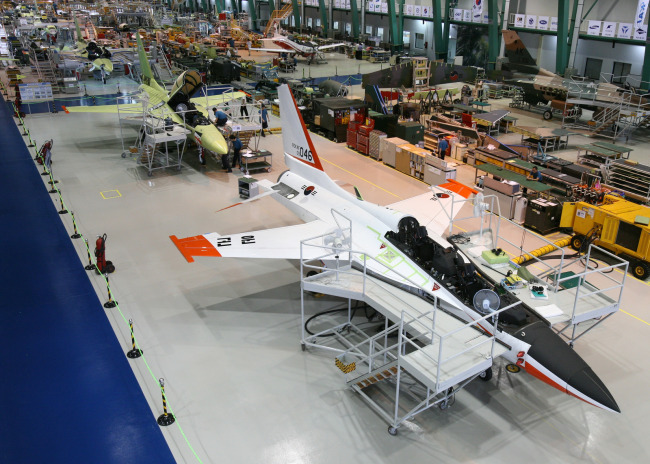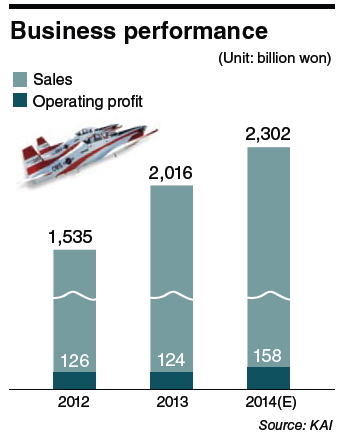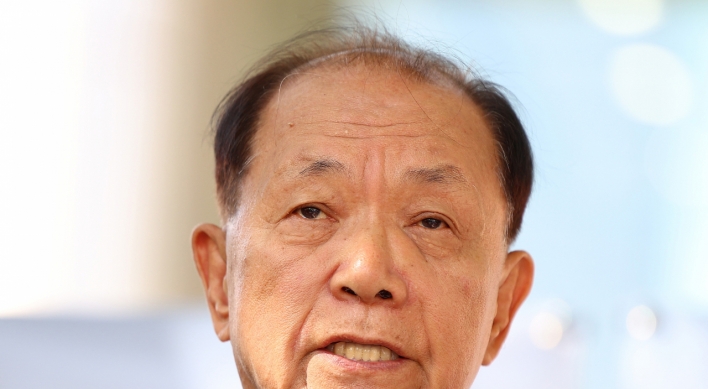Commercial aviation business drives growth of KAI
Aircraft maker seeking more contracts with Boeing and Airbus amid global aviation boom
By Seo Jee-yeonPublished : May 6, 2014 - 20:46
SACHEON, South Gyeongsang Province ― The headquarters of Korea Aerospace Industries in Sacheon is alive with activity, boosted by recent orders not only from the defense sector but also from the world’s top two commercial aircraft makers ― Boeing and Airbus.
As the country’s only plane manufacturer since its establishment in 1999, KAI produces all types of aircraft, ranging from supersonic advanced trainer jets to helicopters and drones.
“The company is entering a growth phrase,” Ku Kwan-hyuk, a senior manager from the strategic public relations and cooperation division at KAI, told The Korea Herald.
“Besides rising demand for Korean aircraft from the global defense industry, a robust backlog in the firm’s commercial aviation business is fueling the growth.”
KAI’s main business in the commercial aviation sector is supplying key parts and frames to Boeing and Airbus.
As the country’s only plane manufacturer since its establishment in 1999, KAI produces all types of aircraft, ranging from supersonic advanced trainer jets to helicopters and drones.
“The company is entering a growth phrase,” Ku Kwan-hyuk, a senior manager from the strategic public relations and cooperation division at KAI, told The Korea Herald.
“Besides rising demand for Korean aircraft from the global defense industry, a robust backlog in the firm’s commercial aviation business is fueling the growth.”
KAI’s main business in the commercial aviation sector is supplying key parts and frames to Boeing and Airbus.


“Compared with defense orders, the firm’s commercial business has been relatively unknown to the public, but the latter business made up 33 percent of the firm’s total sales in 2013,” Ku said. KAI’s sales stood at around 2 trillion won ($1.9 billion) last year.
“Few know that KAI is the sole manufacturer of the wing ribs for the Airbus 350, and of the wing box for Boeing’s 787,” said Park Gyu-cheul, a senior manager from KAI’s research and development division. The plane maker has also been the sole manufacturer of fuselages for the Apache, Boeing’s advanced attack helicopter, since 2004.
“The company considers the commercial aviation business important for future growth,” Ku said.
Industry watchers said KAI will invest more in its commercial business, looking to make the sector account for 50 percent of its sales.
Behind the investment plan is a global aviation boom. According to Boeing’s forecast published in 2013, more than 35,000 new aircraft ― worth perhaps $4.8 trillion ― will be needed over the next 20 years. Almost 25,000 of them will be single-aisle planes, and almost 13,000 of them will be used in Asia.
Hi Investment & Securities predicted that the KAI is expected to take advantage of the global aviation trend as the global pool of suppliers for Boeing and Airbus is limited.
“KAI is no longer just a parts supplier for the world’s top two civil airline makers,” Park said.
“In many cases, the company participates in a project from the development stage with Boeing or Airbus as a risk-and-revenue sharing partner, based on long-term contact.”
In the latest development, KAI announced in February it would participate in a bid to become a risk-sharing partner for the development and production of the fuselage and wings of Boeing’s 777X aircraft.
Beating rivals with automation
The emergence of KAI as a key supplier for Boeing and Airbus results not only from the company’s advanced technology, but also from cost cuts through the automation of production.
“It was the world’s first trial to build an automated process to manufacture wing ribs of an airline,” said Kim Byung-joo, who designed the automation plant to produce a wing rib for the A350.
With the completion of the world’s largest flexible manufacturing system in the KAI complex in Sacheon, the company expects to cut fixed production costs by 30 percent.
Another automation project run by KAI is its newly built Sancheong plant to supply 460 wing-bottom panels for the A320 aircraft over the next 12 years. The plant was completed last month in Sancheong County, South Gyeongsang Province, 30 minutes’ drive from the Sacheon headquarters.
“The automation of production was key to winning the $1.2 billion project,” said Lee Jin-jae, the head of Sancheong plant.
“The success of the two automated plants will give a strong and unique competitive edge to KAI amid strong competition to win multibillion-dollar orders from passenger jet makers.”
Kim Ik-sang, a stock analyst from Hi Investment & Securities, projected that KAI will be on track to fulfill its vision of becoming one of the top 15 aerospace powerhouses in the world by 2020 with 10 trillion won in sales.
By Seo Jee-yeon (jyseo@heraldcorp.com)






![[KH Explains] No more 'Michael' at Kakao Games](http://res.heraldm.com/phpwas/restmb_idxmake.php?idx=644&simg=/content/image/2024/04/28/20240428050183_0.jpg&u=20240428180321)











![[Herald Interview] Mistakes turn into blessings in street performance, director says](http://res.heraldm.com/phpwas/restmb_idxmake.php?idx=652&simg=/content/image/2024/04/28/20240428050150_0.jpg&u=20240428174656)
